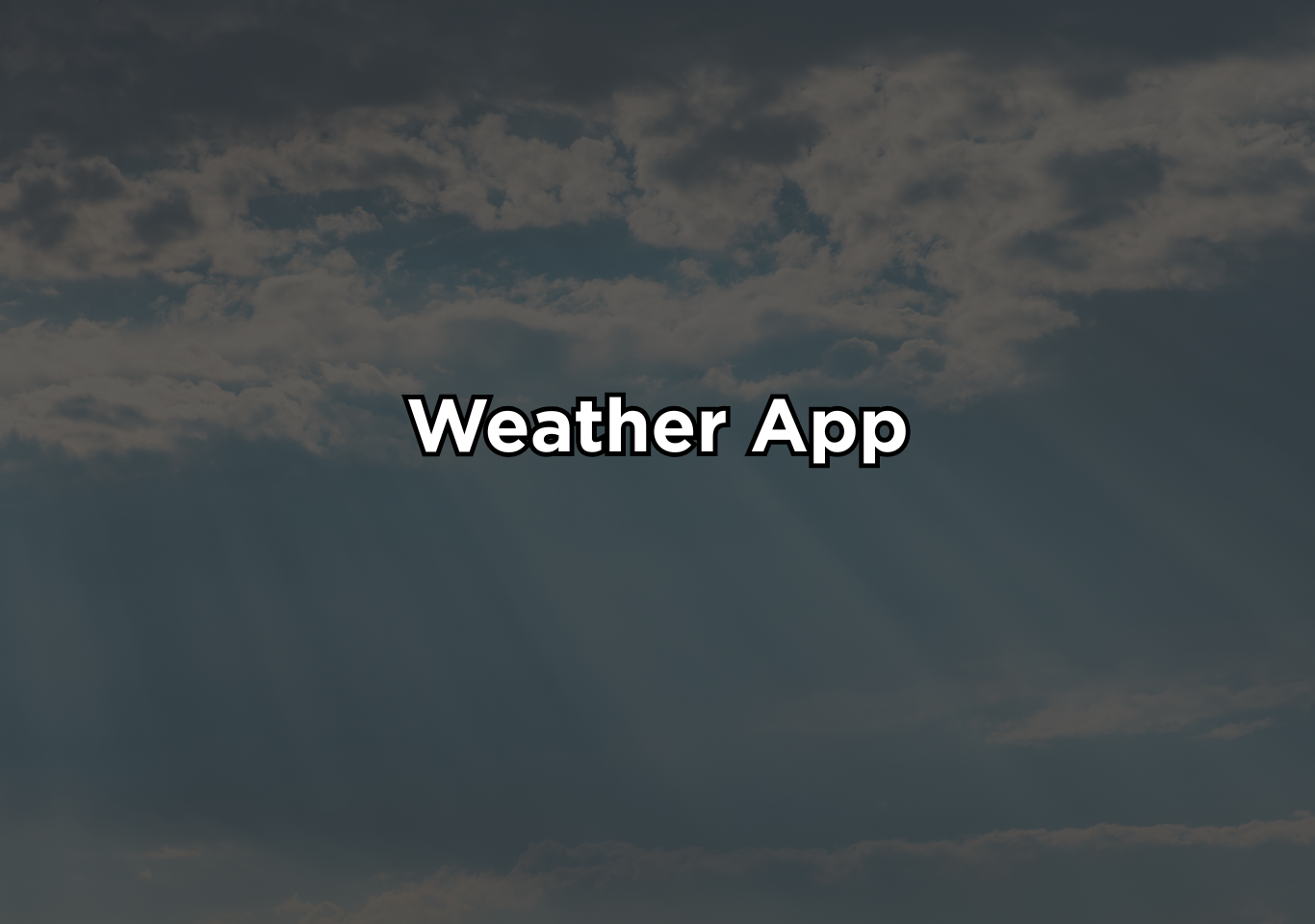Introduction
A weather app is a mobile application that provides real-time and forecasted weather information for specific locations. It is useful for getting weather information for different cities.
The weather app gathers meteorological data such as temperature, humidity, wind speed, air pressure, and precipitation from trusted weather data providers through APIs like OpenWeatherMap or WeatherAPI. The app processes this data and presents it to users in an easy-to-understand format, often using icons, graphs, and animations to represent different weather conditions.
Modern weather apps also include advanced features such as hourly and weekly forecasts, location-based updates using GPS, and severe weather alerts. Some even display air quality indexes, UV levels, and radar maps. These applications help users plan their daily activities, travel schedules, or outdoor events by offering accurate, up-to-date weather insights.
For developers, building a weather app is an excellent project to learn API integration, data parsing, and user interface design. Popular platforms like Android allow the creation of highly interactive weather apps using languages like Java or Kotlin. In short, a weather app serves as a personal meteorologist, providing timely, localized, and accessible weather information right on your smartphone.
Creating a weather app in Android Java is an excellent project for developers who want to combine creativity, technical skills, and real-world functionality. With Java’s reliability, Android’s flexibility, and the vast availability of weather APIs, you can craft an app that offers users instant, accurate, and visually engaging weather information.

Why build a weather app in Java?
Java’s Reliability and Popularity
Java has been the backbone of Android development for years. It’s stable, well-documented, and supported by a massive developer community. Building a weather app in Java ensures compatibility with a wide range of Android devices.
Ideal for Learning APIs and JSON
A weather app is a great beginner-friendly project for understanding how to consume APIs and handle JSON data in Android applications.
Real-World Relevance
Everyone checks the weather which makes your app useful, relevant, and easy to market. It’s also a great addition to your developer portfolio.
UUI Design Practice
You’ll learn to design intuitive layouts that communicate complex weather data in simple, visual formats like icons and animations.
Core features
- Display current temperature, humidity, and wind speed based on the user’s location. These updates should refresh periodically or upon manual request.
- The app can use Android’s location services (GPS) to automatically detect the user’s location and display weather data specific to that region.
- Allow users to search for weather details in different cities worldwide. This is particularly useful for travelers or users with family in other regions.
- Providing short-term (hourly) and long-term (7-day) forecasts makes your app more informative and comprehensive.
- Icons and animations representing sunny, cloudy, rainy, or stormy weather make the interface more intuitive and appealing.
- Push notifications can alert users about severe weather conditions, temperature drops, or high UV levels.
- Personalization enhances user satisfaction. Offering theme options or dark mode improves accessibility and modernizes your app’s interface.
These are the features every weather app must provide. This android app project may not provide every features.
Weather app project interface
The weather app features a clean background image with a title text prompting you to “Enter a City.” Simply type a city name into the input box and click the button to view the current weather details. The information is displayed neatly in the text view section, fetched dynamically from the provided URL using JSON libraries to process data.
Make sure to grant internet permission in your app’s manifest file; without it, the application won’t be able to access live weather data. If you click the button without entering a city name, the app will display a toast message reminding you to provide input.
The layout is designed using a RelativeLayout, which simplifies the placement of widgets and ensures a well-structured interface. Working on this project helps you understand essential Android development concepts like user input handling, API integration, and data parsing. It’s a practical, hands-on project that will enhance your skills and confidence as an Android developer.
How to use this project?
- Download the project and extract the folder.
- Open android studio IDE.
- Set up the project.
- Select android emulator.
- Execute the project code.
- Get the weather information.
- Enjoy!
Take the next step toward mastering Android development. Download the Weather App project now and explore how APIs, JSON, and layout design come together to create a functional real-time application. Customize it with your own design, add new features, and make it even better.


